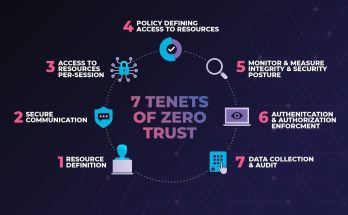The professional landscape has undergone a profound transformation, with virtual meetings and remote collaboration evolving from a niche practice to a cornerstone of daily operations for countless businesses worldwide. Driven by technological advancements and accelerated by global shifts, the ability to connect and work effectively across geographical divides is no longer a temporary adjustment but a fundamental skill. Yet, while the tools for virtual interaction are readily available, truly making the most of these platforms to foster productivity, engagement, and a cohesive team environment requires more than just logging on. It demands intentional strategies, a focus on digital etiquette, and a commitment to leveraging technology for enhanced human connection.
One of the most critical elements in maximizing the effectiveness of virtual meetings is **meticulous preparation**. Just as with in-person gatherings, a clear agenda is non-negotiable. Distribute it well in advance, outlining discussion points, desired outcomes, and who is responsible for leading each segment. This allows participants to prepare thoroughly, gather necessary information, and come ready to contribute meaningfully. Beyond the agenda, ensure all necessary documents, presentations, or links are shared beforehand, preferably through a collaborative platform that allows for real-time access during the meeting. Testing your technology – checking your internet connection, microphone, camera, and any screen-sharing functionalities – a few minutes before the call can prevent awkward delays and technical disruptions, ensuring a smooth start.
During the meeting itself, **active engagement and clear communication** become paramount. Encourage participants to turn on their cameras whenever feasible. Seeing faces fosters a sense of presence, allows for non-verbal cues to be read, and combats the isolation that can sometimes accompany remote work. While it might feel unnatural initially, consciously engaging in “active listening” by nodding, making eye contact with your camera, and offering verbal affirmations (e.g., “I understand,” “that makes sense”) can signal your attentiveness. Utilize the platform’s interactive features: the chat function for quick questions or resource sharing, polling features for quick consensus checks, and virtual whiteboards for brainstorming. For larger groups, designate a moderator to manage the chat, call on participants, and ensure everyone has an opportunity to speak, preventing people from talking over one another, which is a common virtual meeting pitfall.
**Setting clear virtual etiquette guidelines** can significantly enhance the experience. This includes muting microphones when not speaking to eliminate background noise, avoiding multitasking (like checking emails or Browse other tabs) which diminishes engagement, and being mindful of your physical environment to minimize distractions for others. For instance, ensure your background is professional and lighting is adequate. Establishing a “no distractions” pact can elevate the quality of discussion. Furthermore, respecting time zones is crucial, especially for international teams. When scheduling meetings, use tools that automatically convert times, and whenever possible, rotate meeting times to avoid consistently burdening colleagues in distant time zones.
For **remote collaboration beyond formal meetings**, leveraging shared digital workspaces is fundamental. Cloud-based platforms for document sharing, project management, and communication are essential for maintaining continuity and transparency. Tools like Google Workspace, Microsoft 365, Slack, or Trello allow teams to co-create documents in real-time, track project progress, assign tasks, and communicate asynchronously. This reduces reliance on endless email chains and ensures that all team members have access to the latest versions of documents and up-to-date project information. For example, a marketing team spread across Berlin and Munich can simultaneously work on a presentation, seeing each other’s edits as they happen, ensuring efficient collaboration.
Crucially, fostering a sense of **team cohesion and psychological safety** is vital in a remote setting. While technology facilitates tasks, it’s the human connection that truly binds a team. Dedicate a few minutes at the beginning of virtual meetings for informal check-ins or “water cooler” chat to build rapport. Encourage virtual social events, like online coffee breaks or game nights, to maintain a sense of camaraderie. Managers should proactively schedule one-on-one virtual check-ins with team members to discuss not just work, but also well-being and any challenges they might be facing. Creating a culture where it’s safe to ask questions, admit mistakes, and experiment without fear of judgment is even more important when physical cues are absent.
Finally, the intelligent **use of asynchronous communication** can prevent “Zoom fatigue” and boost productivity. Not every conversation requires a live video call. For updates, quick questions, or brainstorming ideas that don’t need immediate consensus, utilize messaging platforms, shared documents with comment features, or recorded video messages. This respects everyone’s time, allows for thoughtful responses, and accommodates different working styles and schedules, especially across diverse time zones. Balancing synchronous (live meetings) and asynchronous communication is key to optimizing remote collaboration.
In essence, making the most of virtual meetings and remote collaboration extends far beyond simply possessing the right technology. It necessitates a deliberate strategic approach encompassing meticulous preparation, active engagement, clear etiquette, effective use of collaborative tools, and a sustained focus on human connection. By embedding these practices into the operational fabric, businesses can transform remote work from a mere necessity into a powerful driver of productivity, innovation, and a truly connected global workforce.



